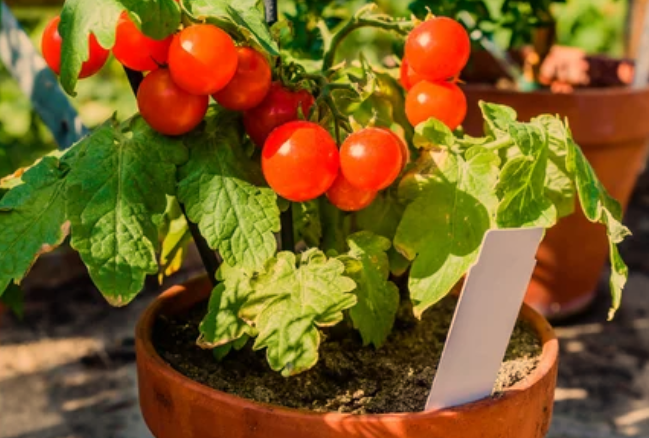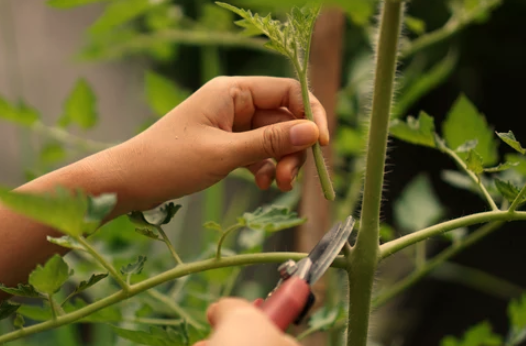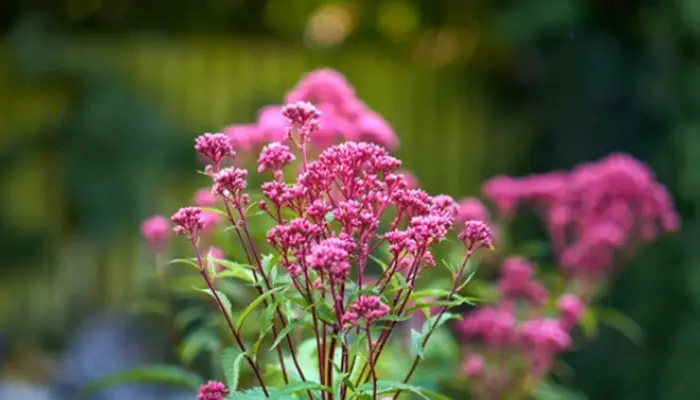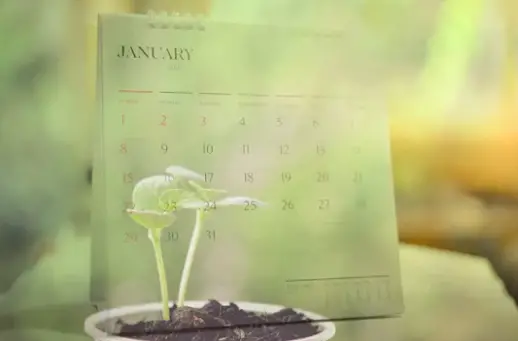Choosing the Right Pot Size for Your Tomatoes

When growing tomatoes effectively in containers, choosing the right pot size is essential.
Particularly for tomatoes, container gardening has many advantages, including making the most of limited space and having more control over the soil.
Today, we’ll examine the various stages of tomato plant development, the variables affecting pot size, tips for selecting the ideal pot size, the advantages of using a sufficient pot size, planting and caring for tomatoes in containers, troubleshooting typical problems, and advice from seasoned gardeners.
How Tomato Plants Growth?

Tomato plant growth is a fascinating and dynamic process that unfolds through several distinct stages: seedling, vegetative, flowering, and fruiting. Each stage plays a crucial role in the development of healthy and productive tomato plants.
Seedling Stage: This is the initial phase of a tomato plant’s life, starting from the germination of the seed. During this stage, the young seedling emerges from the soil, unfurls its cotyledons (first leaves), and begins to develop its true leaves. Seedlings are vulnerable and require careful attention to lighting, moisture, and temperature to ensure sturdy growth.
Vegetative Stage: As the seedling matures, it enters the vegetative stage. This is a period of rapid leaf and stem growth, during which the plant establishes a strong foundation. Lush foliage development is essential, as it contributes to the plant’s ability to produce energy through photosynthesis.
Flowering Stage: The transition to the flowering stage marks a significant shift in the plant’s focus.
At this point, the tomato plant redirects its energy toward the production of flowers, which are essential for fruit formation. Proper pollination is crucial during this phase, as it determines the number of fruit that will develop.
Fruiting Stage: In the fruiting stage, the plant’s energy is directed toward producing and ripening tomatoes.
The fertilized flowers develop into small green fruit that gradually changes color as they mature. Adequate nutrition, sunlight, and water are essential during this phase to ensure the production of flavorful and healthy tomatoes.
Root Structure and Pot Size Requirements:
Tomato plants possess a well-developed root system that serves as the foundation for their growth and overall health. The root structure includes both the main taproot and a network of lateral roots that spread outwards to gather nutrients and water from the surrounding soil.
The size of the pot plays a critical role in accommodating the root structure. Ample space for root expansion is vital to ensure efficient nutrient uptake and water absorption.
Inadequate space can lead to root binding, where roots become tightly packed and struggle to access essential resources, stunting the plant’s growth and productivity.
Providing Enough Space for Roots: To ensure healthy tomato plants, it’s essential to provide sufficient room for the roots to spread and access nutrients.
This is particularly important in container gardening, where the space is limited compared to traditional in-ground planting. Choosing an appropriately sized pot allows the root system to expand freely, supporting robust growth and optimal fruit production.
In the next section, we will explore the factors that influence the ideal pot size for tomato plants, taking into account various considerations such as tomato variety, climate, and available space.
Factors Influencing Right Pot Size for Your Tomatoes

Several factors come into play when determining the ideal pot size for growing tomatoes. Each factor contributes to the overall health, growth, and productivity of your tomato plants in containers. Let’s explore these factors in detail:
- Tomato Variety: Different tomato varieties have varying growth habits and sizes. Determinate varieties tend to be more compact and bush-like, while indeterminate varieties are more vining and can grow taller. Determining the type of tomato you’re growing will help you select an appropriate pot size. Indeterminate varieties generally require larger pots due to their expansive growth.
- Climate and Growing Conditions: The local climate and growing conditions play a significant role in pot size selection. In hot or arid climates, larger pots with more soil volume can help retain moisture and reduce the risk of water stress. Conversely, in cooler climates, smaller pots may be sufficient as water retention may not be as much of a concern.
- Available Space: Container gardening is often chosen for its space-saving benefits. The available space you have for gardening will influence the size of pots you can use. If space is limited, consider compact determinate varieties or utilize vertical gardening techniques to maximize your growing area.
- Root Development and Nutrient Uptake: A larger pot allows for more extensive root development, which in turn enhances the plant’s ability to take up nutrients and water. Ample root space reduces the risk of nutrient deficiencies and encourages healthier overall plant growth.
- Plant Stability and Support: Larger pots provide greater stability for your tomato plants, especially indeterminate varieties that can become top-heavy as they grow taller. This stability is essential to prevent the plant from toppling over, which can damage stems and disrupt fruiting.
- Water Retention and Drainage: Pot size affects water retention and drainage. Larger pots retain moisture for a longer duration, reducing the frequency of watering, which is especially beneficial during hot weather. Proper drainage prevents waterlogging and root rot, ensuring healthier roots.
- Nutrient Availability: A larger pot offers a larger volume of soil, which can hold more nutrients for the plant. This reduces the likelihood of nutrient depletion over time, leading to improved plant health and fruit production.
- Growth Potential and Pruning: If you plan to allow your tomato plants to grow to their full potential, larger pots will accommodate their growth. However, if you plan to practice pruning to manage plant size, you may be able to use slightly smaller pots.
Choosing the Right Pot Size for Your Tomatoes

When considering these factors collectively will help you choose the right pot size for your specific tomato plants and growing conditions. In the next section, we’ll provide specific guidelines for selecting the appropriate pot size based on different tomato varieties and expected plant sizes.
Choosing the right pot size is a critical step in ensuring the successful growth of your tomato plants in containers. The pot size you select will directly impact the health, development, and productivity of your plants. Here are guidelines for choosing the appropriate pot size based on tomato variety and expected plant size:
Determinate Varieties:
Determinate tomato varieties are more compact and have a bush-like growth habit. They tend to reach a certain height and then focus on producing fruit. For determinate varieties, smaller pots can be suitable. Choose pots with a capacity of 1 to 2 gallons for each plant. These sizes provide enough room for root growth and support the smaller stature of determinate plants.
Indeterminate Varieties:
Indeterminate tomato varieties are vining and continue to grow and produce fruit throughout the growing season. They require larger pots to accommodate their extensive root systems and vertical growth. Opt for pots with a capacity of 5 to 10 gallons for each indeterminate plant. Larger pots offer the space needed for both root development and upward growth.
Balcony and Compact Varieties:
If you have limited space or are gardening on a balcony, consider compact or patio tomato varieties. These plants are bred to be more compact and are well-suited for smaller pots. A pot size of 3 to 5 gallons should be sufficient for these varieties.
Spacing and Planting Density:
Regardless of the tomato variety, proper spacing between plants is essential. Avoid overcrowding, as it can lead to competition for resources and hinder air circulation. Aim for at least 2 feet (60 cm) of spacing between determinate plants and 3 feet (90 cm) or more between indeterminate plants.
Pot Depth:
In addition to pot size, consider pot depth. Tomatoes have a deep root system, so choose pots that are at least 12 to 18 inches (30 to 45 cm) deep to allow for adequate root expansion. Deeper pots promote better nutrient and water uptake.
Multiple Plants in a Single Pot:
If you’re growing multiple tomato plants in a single large pot, ensure that the pot size is appropriate to accommodate the combined root systems. Increase the pot size based on the number of plants to prevent overcrowding.
Stability and Support:
Regardless of the tomato variety, prioritize pot stability. Larger pots provide better stability, especially for indeterminate plants that can become top-heavy. Staking or providing support cages is recommended for indeterminate varieties to keep them upright.
Remember that while larger pots offer numerous advantages, they also require more soil, which can add weight and make transportation more challenging. Additionally, selecting high-quality potting mix enriched with organic matter will further enhance plant growth.
Benefits of Adequate Pot Size

Selecting the appropriate pot size for your tomato plants goes beyond merely accommodating their growth; it directly influences their health, productivity, and overall success in container gardening. Here are the key benefits of using the correct pot size:
- Improved Nutrient Uptake: Ample space for root development in a properly sized pot allows tomato plants to access a greater volume of soil and nutrients. This results in healthier root systems that can efficiently absorb essential nutrients, leading to robust foliage growth, vibrant flowers, and flavorful fruits.
- Reduced Risk of Root-Bound Plants: Insufficient room for root growth can lead to root binding, where roots become tightly packed and constricted within the pot. This condition limits nutrient and water absorption, stunts plant growth, and ultimately affects fruit production. Adequate pot size prevents root binding, promoting healthier and more vigorous plants.
- Optimal Water Management: Larger pots provide a buffer against rapid soil drying, especially in hot weather. They can retain moisture for a longer duration, reducing the risk of water stress and preventing fluctuations in soil moisture levels. This consistent water supply contributes to better plant health and helps prevent issues like blossom end rot.
- Enhanced Air Circulation: Proper pot size allows for sufficient spacing between plants, promoting adequate air circulation. Good air circulation minimizes the risk of fungal diseases and molds that can thrive in humid or stagnant conditions.
- Stability and Structural Support: Larger pots offer stability to support the plant’s weight as it grows. This is particularly important for indeterminate varieties, which can become top-heavy due to their vertical growth. Stable plants are less prone to bending, breaking, or toppling over, ensuring the longevity of your tomato plants.
- Extended Growing Season: Adequate pot size allows plants to develop a strong root system capable of supporting continuous growth and fruiting. This extended growth period can result in a longer harvest season, providing you with a bountiful supply of fresh tomatoes.
- Minimized Transplant Shock: Starting your tomato plants in pots that are appropriately sized for their growth helps minimize transplant shock when moving them from smaller pots to larger ones. Transplanting stress is reduced, leading to quicker recovery and uninterrupted growth.
- Reduced Maintenance and Care: Properly sized pots require less frequent watering and maintenance compared to smaller pots, which can dry out quickly. This convenience makes gardening more manageable, especially during hot or busy periods.
- Better Fertilizer Management: Larger pots have a greater soil volume, allowing for a more even distribution of nutrients. This helps maintain optimal nutrient levels, reducing the need for frequent fertilization.
- Maximized Fruit Production: When tomato plants have ample space and resources, they can channel their energy into producing more and larger fruits. Proper pot size contributes to higher yields and more satisfying harvests.
Planting and Caring for Tomatoes in Containers

Planting and caring for tomatoes in containers requires careful attention to detail to ensure optimal growth and a bountiful harvest. Follow these step-by-step instructions and tips to cultivate healthy and productive tomato plants in your containers:
1. Choose the Right Container: Select pots with appropriate sizes based on the tomato variety you’re growing. Use pots that are at least 12 to 18 inches (30 to 45 cm) deep and provide adequate drainage holes to prevent waterlogging.
2. Use High-Quality Potting Mix: Fill the containers with a well-draining, nutrient-rich potting mix. Avoid using garden soil, as it can become compacted and hinder root growth. Enrich the potting mix with compost or slow-release fertilizer for added nutrients.
3. Planting Tomato Seedlings: Gently remove tomato seedlings from their nursery containers and transplant them into the prepared pots. Ensure the top of the root ball is level with the soil surface. Space plants according to their recommended distance to prevent overcrowding.
4. Provide Support: Insert stakes, cages, or trellises into the pots shortly after planting. As the plants grow, secure them to the supports to prevent bending or breaking due to the weight of the fruit.
5. Watering: Water thoroughly after planting to settle the soil. Maintain consistent moisture levels, ensuring the soil remains evenly moist but not waterlogged. Use a saucer under the pot to catch excess water and prevent root rot.
6. Sunlight: Place the containers in a location that receives at least 6-8 hours of direct sunlight per day. Tomatoes thrive in full sun and need ample light for proper growth and fruit production.
7. Fertilization: Fertilize regularly with a balanced liquid fertilizer, following the manufacturer’s instructions. Consider using a fertilizer formulated specifically for tomatoes to provide essential nutrients for healthy growth.
8. Pruning and Training: As your tomato plants grow, pinch off suckers (the growth that appears between the main stem and branches) to encourage upward growth and better airflow. Indeterminate varieties may require more pruning and training to manage their size.
9. Mulching: Apply a layer of organic mulch, such as straw or wood chips, around the base of the plants. Mulch helps retain moisture, suppresses weeds, and maintains a more even soil temperature.
10. Watering and Fertilization Adjustments: As your tomato plants grow, adjust your watering and fertilization routines to meet their changing needs. Larger pots may require less frequent watering, while regular feeding ensures continued nutrient supply.
11. Pest and Disease Management: Monitor your plants for signs of pests or diseases. Regularly inspect leaves, stems, and fruit for any abnormalities. If issues arise, treat them promptly with appropriate organic or chemical solutions.
12. Harvesting: As your tomato plants produce ripe fruit, gently pick them off the vine. Harvesting encourages further fruit development and prevents overripening or splitting. Enjoy your homegrown tomatoes at their peak freshness!
13. Overwintering or Replanting: In colder climates, you may need to bring your container-grown tomato plants indoors during the winter or replant new seedlings in the following growing season.
Troubleshooting Common Issues
While container gardening offers numerous benefits for growing tomatoes, there are certain common issues that can arise, especially if pot sizing and care are not properly managed. Here are some potential problems you may encounter and their corresponding solutions:
- Stunted Growth: Cause: Insufficient root space in smaller pots can lead to stunted growth as the plant struggles to access nutrients and water. Solution: Repot the tomato plant into a larger container to provide more room for root expansion. Ensure proper watering and fertilization to support healthy growth.
- Yellowing Leaves: Cause: Yellowing leaves can result from nutrient deficiencies, poor drainage causing root rot, or overwatering. Solution: Adjust watering practices to maintain consistent moisture levels. Fertilize as needed with a balanced fertilizer to address nutrient deficiencies. Ensure containers have proper drainage to prevent waterlogged roots.
- Limited Fruit Production: Cause: Inadequate root space, lack of pollination, or poor nutrition can lead to limited fruit production. Solution: Choose an appropriate pot size to support healthy root growth. Hand-pollinate flowers if natural pollination is lacking. Maintain proper fertilization to ensure optimal nutrient availability for fruit development.
- Blossom End Rot: Cause: Blossom end rot is often due to calcium deficiency and inconsistent watering. Solution: Ensure consistent watering to prevent fluctuations in soil moisture. Add calcium-rich amendments to the soil or use calcium-fortified fertilizers to address nutrient imbalances.
- Wilting Plants: Cause: Wilting may result from underwatering, overwatering, or root damage. Solution: Adjust watering practices to maintain appropriate moisture levels. Inspect the roots for signs of damage or disease. If necessary, repot the plant into fresh, well-draining soil.
- Pest and Disease Infestations: Cause: Pests like aphids, caterpillars, or diseases like blight can affect container-grown tomatoes. Solution: Regularly inspect plants for signs of pests or diseases. Use organic or chemical treatments to address infestations promptly. Consider practicing crop rotation to prevent disease buildup.
- Nutrient Deficiencies: Cause: Inadequate or imbalanced fertilization can lead to nutrient deficiencies, affecting plant health. Solution: Fertilize with a balanced, water-soluble fertilizer according to the recommended schedule. Consider using a slow-release fertilizer to provide a steady supply of nutrients over time.
- Overcrowding: Cause: Planting too many tomatoes in a single container can lead to competition for resources and restricted growth. Solution: Properly space plants according to their recommended distances. If overcrowding has already occurred, consider repotting into larger containers or thinning out excess plants.
- Temperature Stress: Cause: Extreme temperatures, especially heat, can stress tomato plants and affect growth and fruiting. Solution: Provide shade during hot periods, ensure proper ventilation, and water adequately to help plants cope with temperature fluctuations.
Success Stories and Tips from Experienced Gardeners
Success Story 1: Maria’s Bountiful Balcony Tomatoes Maria, a seasoned container gardener, transformed her small balcony into a thriving tomato haven. She opted for compact determinate varieties and chose appropriately sized pots. Maria’s tip: “For limited space, go for bushy determinate tomatoes like ‘Patio Princess.’ They thrive in 1-2 gallon pots and produce a surprising amount of delicious tomatoes!”
Tip 1: When growing tomatoes in containers, consider the specific space you have available and choose varieties that fit well within that space.
Success Story 2: Carlos’ Vertical Tomato Garden Carlos, an urban gardener, faced space constraints but turned them into an advantage. He set up vertical trellises and grew indeterminate tomatoes in tall pots. Carlos advises, “Invest in sturdy trellises and let your indeterminate tomatoes climb. With proper pruning and support, they’ll reward you with a continuous harvest.”
Tip 2: Vertical gardening can maximize your space and yield, especially with indeterminate tomato varieties. Provide proper support to encourage upward growth.
Success Story 3: Jenna’s Greenhouse Triumph Jenna, an avid gardener, used a small greenhouse to extend her tomato-growing season. She grew a variety of tomatoes in larger pots, allowing her to experiment with different sizes. Jenna’s insight: “Bigger pots are a game-changer. They create a mini-ecosystem, retain moisture, and support robust growth. Just be cautious not to overwater.”
Tip 3: Larger pots provide a buffer against temperature fluctuations and water stress. However, monitor water levels closely to avoid overwatering, which can lead to root rot.
Success Story 4: Sam’s Soil Mix Secret Sam, a tomato enthusiast, focused on creating the perfect soil mix. He blended potting soil, compost, and perlite for excellent drainage and nutrient retention. Sam’s advice: “Your soil mix matters as much as the pot size. Invest time in crafting a balanced mix, and your tomatoes will thank you with vigorous growth.”
Tip 4: A well-draining and nutrient-rich soil mix is essential for healthy tomato plants in containers. Experiment with different combinations to find what works best for you.
Success Story 5: Rebecca’s Early Start Rebecca, a dedicated gardener, gained an early tomato harvest by starting seedlings indoors. She transplanted them into larger pots once they had several leaves. Rebecca suggests, “Begin indoors a few weeks before your last frost date. By transplanting young seedlings into larger pots, you give them a head start.”
Tip 5: Starting tomatoes indoors can help you get a jump on the growing season. Transplanting young, healthy seedlings into larger pots promotes vigorous growth.
These success stories and tips offer practical insights and real-life experiences that readers can relate to and apply in their own container tomato gardening endeavors. They showcase different strategies and approaches that have proven effective for experienced gardeners, adding a personal touch to your guide.
Warp Up
It is important to carefully consider the predicted development of your chosen tomato type, whether it is determinate or indeterminate, in order to select the appropriate pot size.
Smaller pots can limit the potential of your plant, whereas larger pots encourage vigorous root growth and stability.
It becomes evident that determinate types should be planted in smaller pots of 1-2 gallons, whereas indeterminate kinds should be planted in bigger pots of 5–10 gallons.
The benefits of selecting the proper pot size are numerous.
When given the room they require, your tomato plants flourish—from better fertilizer uptake and a decreased risk of root-bound plants to the avoidance of water stress in hot weather.
You may set the setting for a productive container tomato crop by utilizing the right planting and maintenance techniques, such as employing high-quality soil mixtures, giving enough support, and adjusting watering and fertilizing to your pot size.
You may be confident that there are solutions available when problems like stunted development or yellowing leaves appear.
Your tomato plants can be guided back on course to produce a plentiful harvest by repotting into larger containers and tweaking your care regimen.
The experiences and knowledge that seasoned gardeners provide are an invaluable source of inspiration and direction.
These triumphs demonstrate the usefulness of information, creative approaches to problems, and special pleasures of caring for tomatoes grown in containers.
Embrace the possibility of growing your own fresh and delectable tomatoes as you set off on your own container tomato gardening journey, equipped with the knowledge you’ve received from this tutorial.
Whether you have a large garden or a small balcony, you can enjoy the satisfaction of eating tomatoes that you grew yourself.
With proper pot sizing, diligent care, and a touch of gardening passion, your container tomato garden is poised to flourish, enriching your culinary endeavors and connecting you to the wonders of nature in the comfort of your own space.
Source:
Gardening Magazines: Magazines like “Better Homes & Gardens,” “Fine Gardening,” and “Organic Gardening” often provide expert advice and tips on container gardening.
YouTube Channels: Many experienced gardeners and gardening enthusiasts share their knowledge and experiences through YouTube videos. Channels like “Epic Gardening” and “MIgardener” offer valuable insights.






